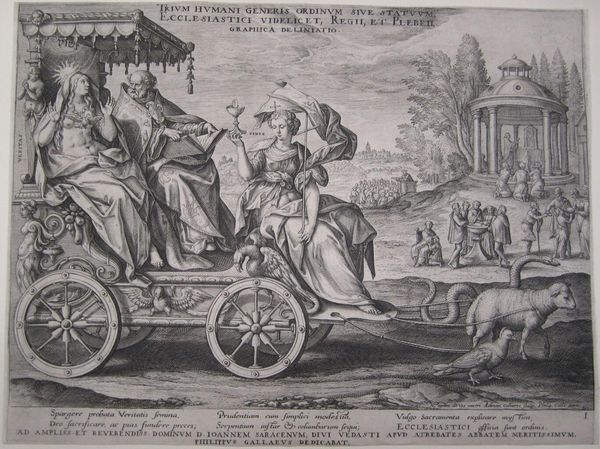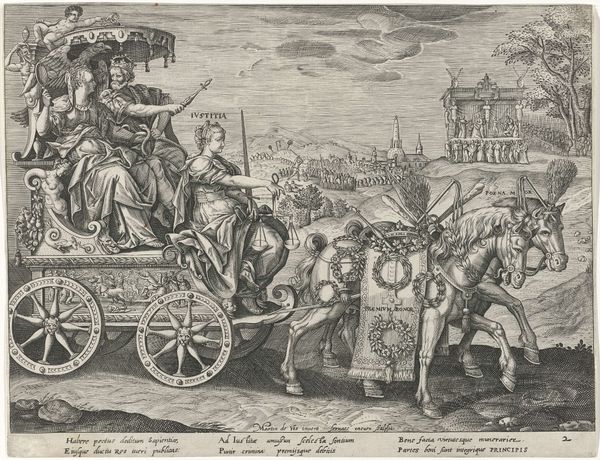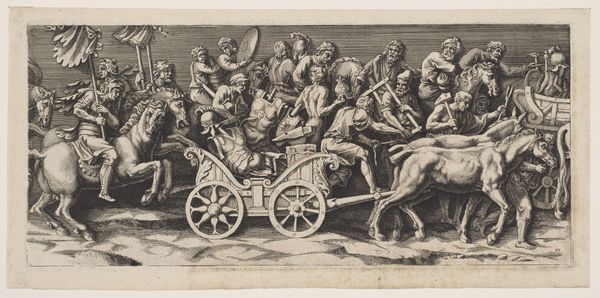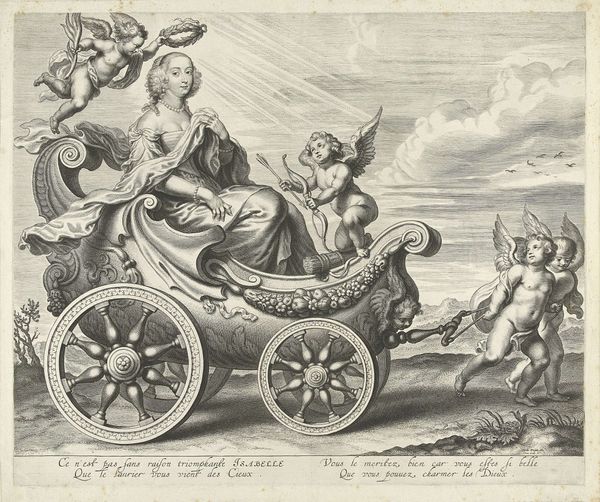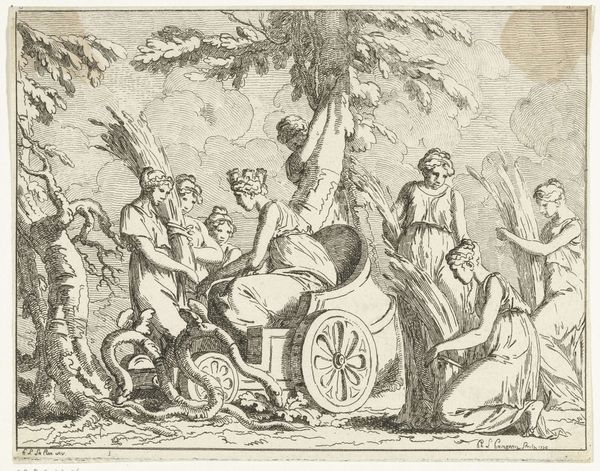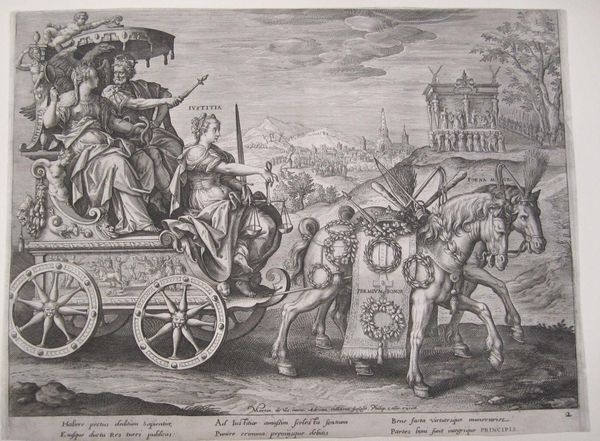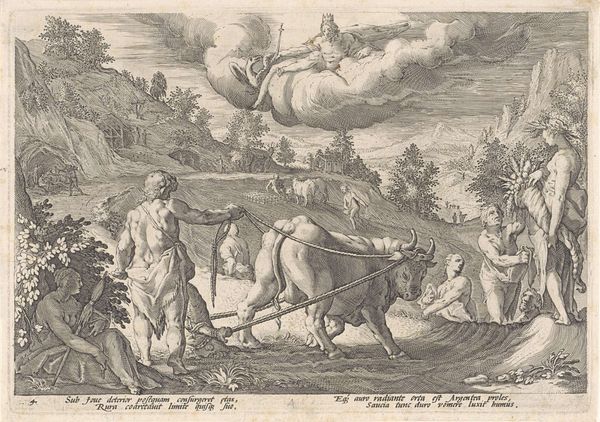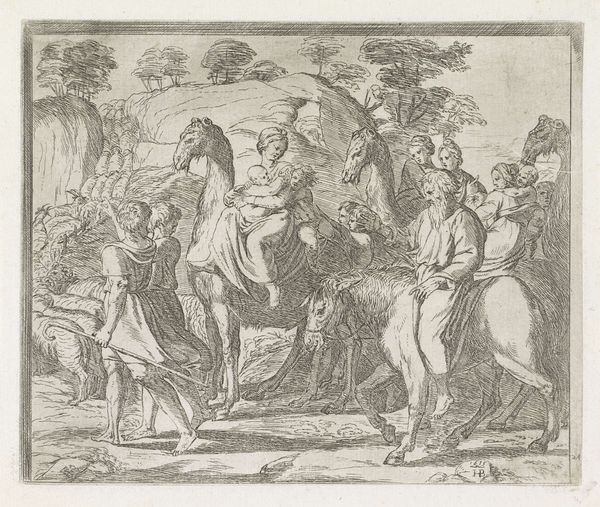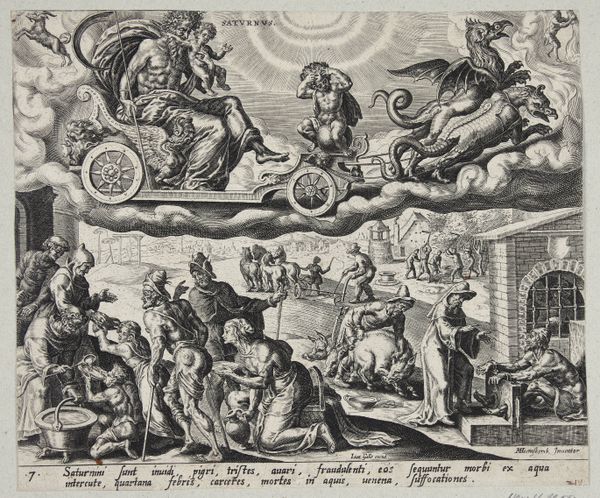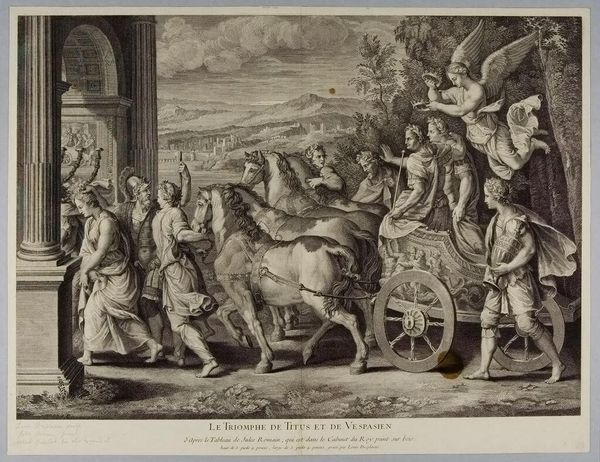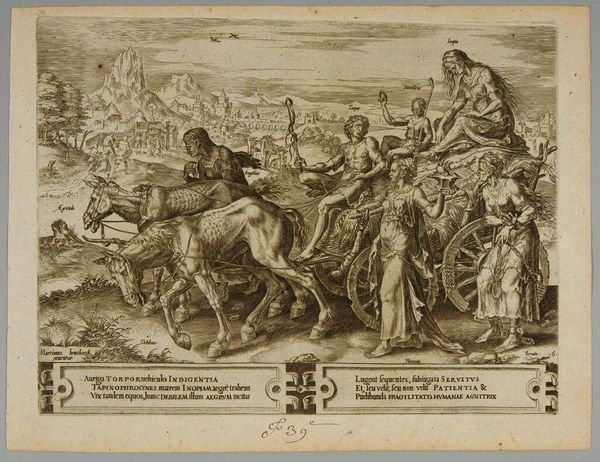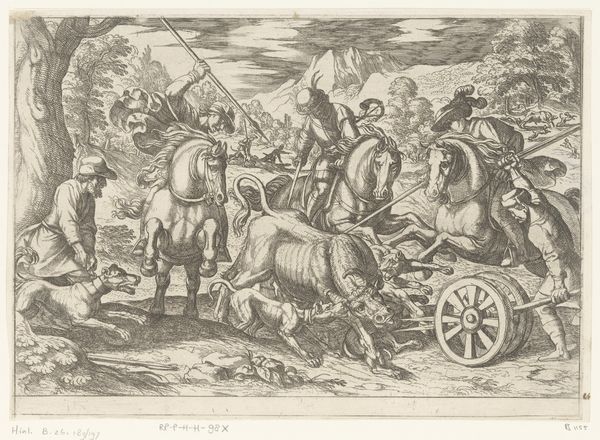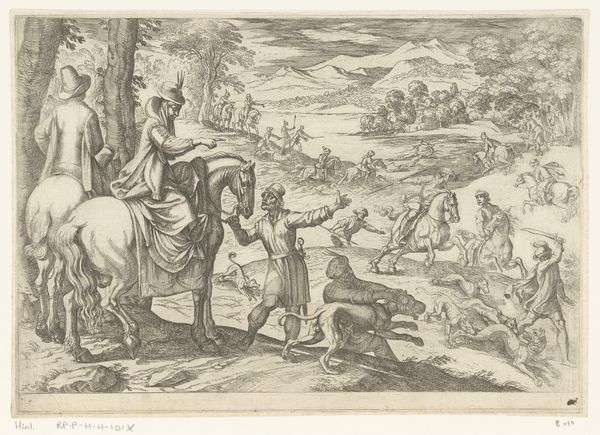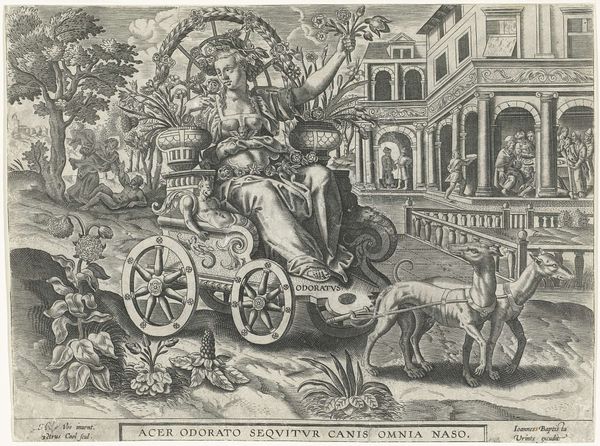
Copyright: Public domain
Editor: This engraving, “Allegory of the First Estate” by Maarten de Vos, dates back to 1589. I am struck by how intricately detailed it is, especially for a black and white print. It feels both crowded and incredibly deliberate in its composition. What’s your take on this piece? Curator: Oh, this is like diving into a 16th-century dream, isn’t it? I find myself pondering the symbolism – like, what’s with the figures on the chariot and what are they dragging along? For me, it's all about understanding the artist's mindset. Here we have figures representing Truth and Piety, perhaps, but pulled by a humble sheep *and* a sneaky snake. That’s some interesting bedfellows. I wonder, did de Vos intend a commentary on the Church? Is that sheep a lamb of God being tempted by worldly cunning? It really is more of an invitation to question, than a declaration. What do you think? Editor: I didn’t catch the duality of that pair pulling the carriage, that is a very compelling point of view to think of them working together rather than apart. The idea that it's not a clear endorsement makes the snake and the sheep far more fascinating as symbols! Curator: Absolutely. I feel as though the most evocative art contains many doors, where one finds themselves asking "What If?" over and over. That back building reminds me of Palladio's work. Are those people repenting or celebrating? It's about the conversation with the art, don't you agree? Editor: Definitely. It makes the engraving feel alive, not just a static image. I had missed a lot of those small details, so looking more closely with you has definitely made me re-evaluate it. Curator: Wonderful! And that’s the beautiful dance we do with art, isn't it? We both leave with our heads swimming with questions and the promise of more to explore.
Comments
No comments
Be the first to comment and join the conversation on the ultimate creative platform.
